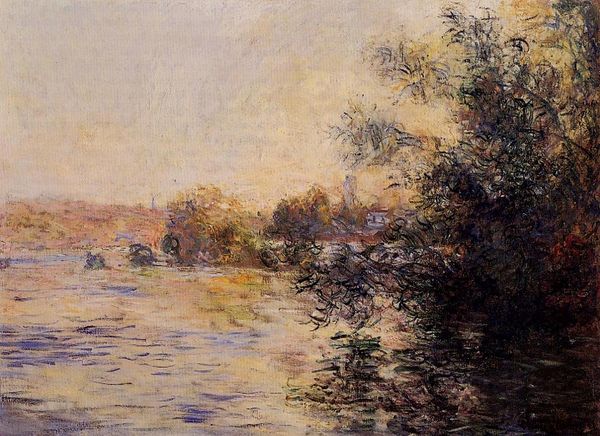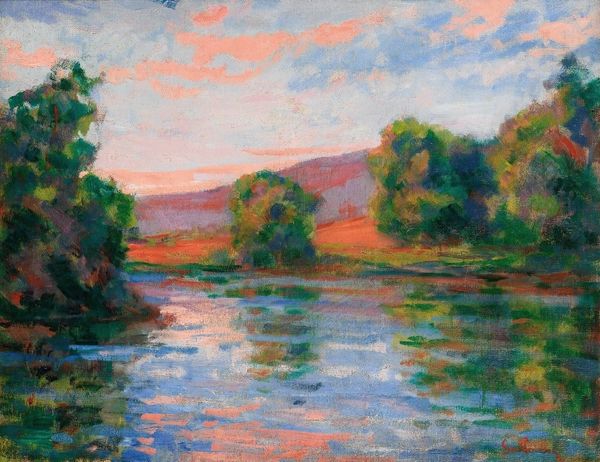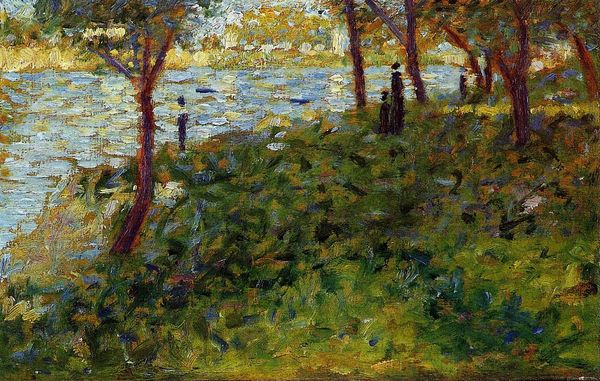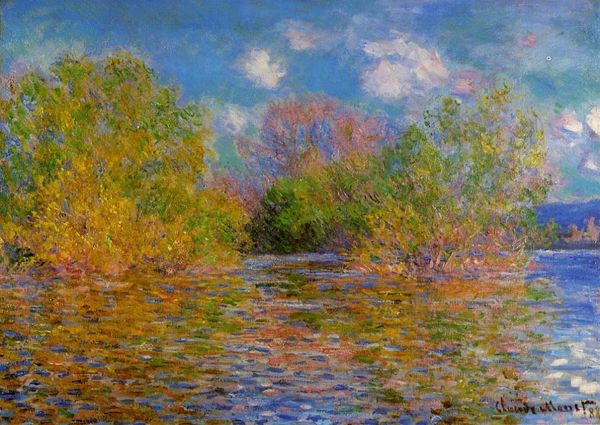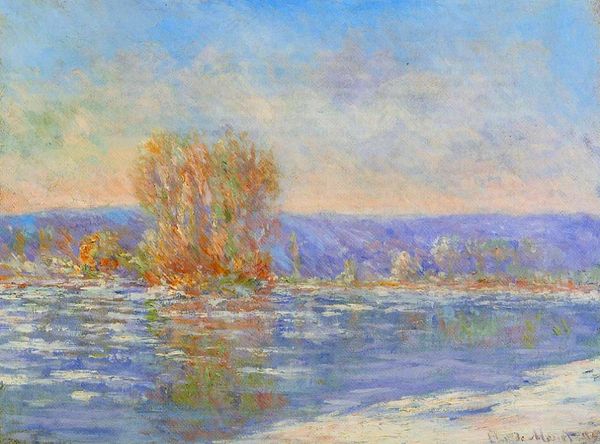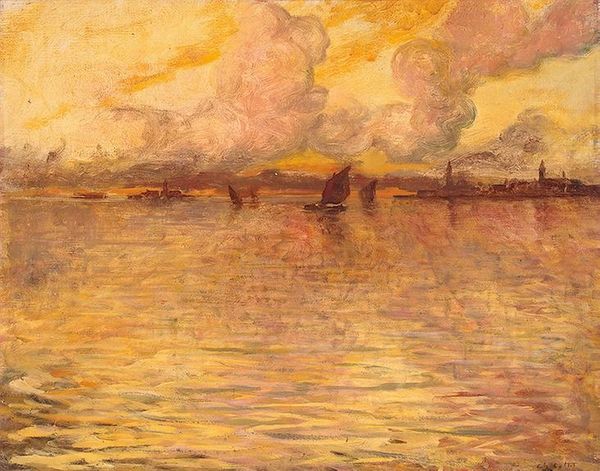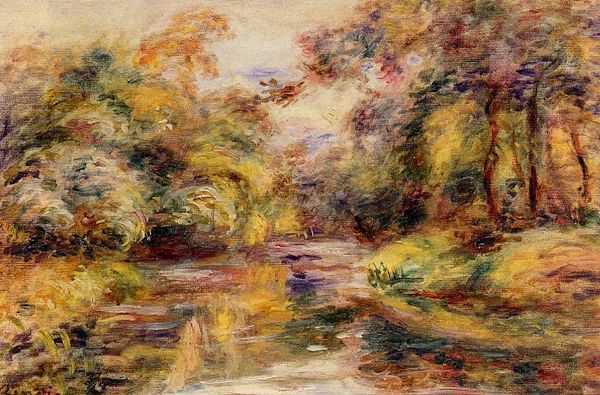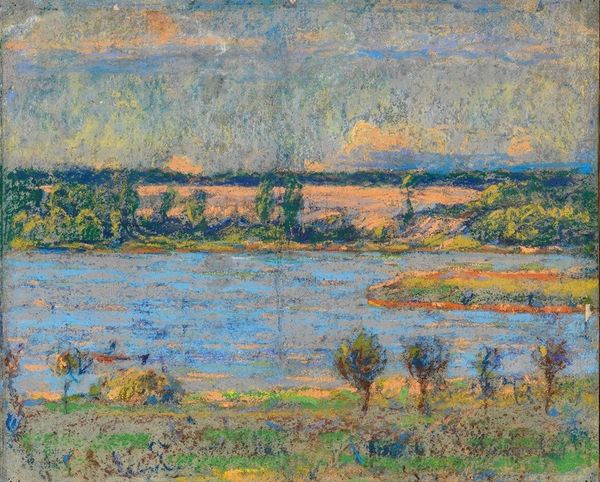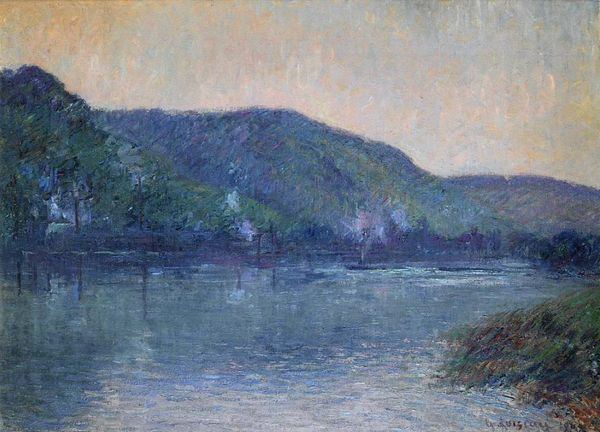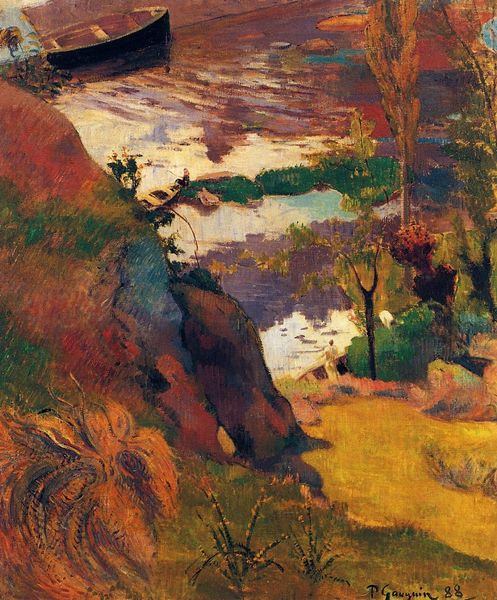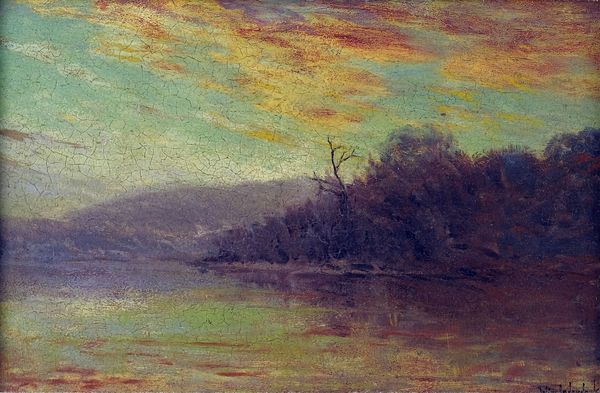
Dimensions: 15.8 x 24.7 cm
Copyright: Public domain
Editor: This is "A River Bank, The Seine at Asnieres", painted by Georges Seurat in 1883, using oil paint. The surface looks rough and textured, almost tactile. What do you make of this landscape, focusing on the materiality of the paint itself? Curator: The visible brushstrokes speak volumes about Seurat's process. Instead of obscuring the labour, the "plein-air" technique highlights it. Look at the broken colour, applied in separate touches. How does this production method relate to the social context of leisure along the Seine? Editor: I guess, he is documenting a common leisure practice with a common artistic technique. But isn't he elevating it through the innovative application? Curator: Precisely. Seurat transformed an everyday scene into something requiring closer examination. The very act of making—the applying, mixing, and layering of paint—becomes central to the meaning. Notice also the materiality of the support – the canvas itself becomes a textural element of the work, grounding its visuality within material constraints. Editor: So, the scene depicted and the method he used are equally significant and contribute to our understanding? Curator: Indeed. It's not merely about representing the riverbank, but about calling attention to the very means by which we perceive and consume it, using industrial colors, commercially available for the first time for his class. By focusing on the material conditions of art making, we gain a richer appreciation of Seurat's ambition. Editor: This has broadened my appreciation of the painting significantly; seeing it now through the lens of process, labor, and consumption makes the image much more complex and socially relevant. Curator: Understanding art through its material production encourages us to think critically about the social forces shaping artistic expression. It adds layers to what might initially appear a simple landscape.
Comments
No comments
Be the first to comment and join the conversation on the ultimate creative platform.
